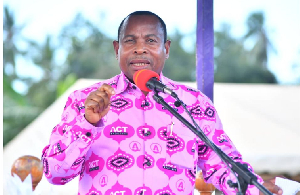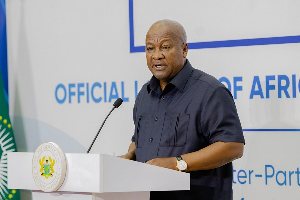Ratings agency Moody’s has said the drop in non-performing loans should see significant growth in banks’ credit to the economy.
Last week, the Bank of Ghana (BoG) – in its monetary policy statement – disclosed that the system’s non-performing loans (NPLs) fell to 13.9 percent as of December 2019, compared to its last disclosure of 17.3 percent as of October 2019.
The drop in NPLs, which Moody’s describes as “credit positive” for the banking system and supports financial stability, should also lead to credit growth remaining high at close to current levels over the next 12-18 months.
“With lower NPLs reducing Ghanaian banks’ asset risks and improving their solvency, they can concentrate on extending credit to the economy. For example, GCB Bank Limited reduced NPLs to 7.1 percent by September 2019 from 14.8 percent in December 2016; well ahead of the system’s NPL reduction.
“Over the same period it has almost doubled its loan book, far outpacing loan-growth in the banking system,” the ratings agency said in its latest outlook on the financial sector.
In the BoG’s MPC statement, credit growth in the system strengthened to 18.3 percent during 2019 compared with just 10.6 percent during 2018. Credit growth is expanding, supported by strong 22.2percent deposit growth in 2019 and a gradual reduction in the average lending rate, which fell to a still-high 23.6 percent in December 2019 – marginally down from 24 percent in December 2018, but below a previous peak of 29.2 percent in November 2015.
To Moody’s, the decline in NPLs follows a recent clean-up and recapitalisation exercise. Moody’s added that the drop reflects continued improvement in the banking system, which has been recovering since 2017 from one of the country’s worst banking crises.
“Between 2017 and early 2019, Ghanaian banks recapitalised following the increase in minimum required paid-up capital and higher capital requirements, while seven insolvent banks where closed down. However, elevated NPLs have lingered.
“Asset risks remain the key credit challenge for Ghanaian banks because asset quality has weakened since 2014. NPLs peaked at 23.5percent in April 2018 as a consequence of slow economic growth and exchange-rate volatility in 2015 and 2016 and weaknesses at the seven insolvent banks, preceded by rapid credit growth and lax credit underwriting standards.
“Since their peak, NPLs have been improving at a slow pace – dropping to 17.3 percent in October 2019 and 13.9 percent by December 2019; a significant acceleration in the declining trend,” the ratings giant added in its statement.
The central bank, Moody’s pointed out, attributes the NPL improvement to increased loan recoveries, write-offs and higher credit growth. “We believe the improvement largely reflects enforcement of the central bank’s loan-loss write-off policy for NPLs that have been fully provisioned for more than two years. New regulatory directives on risk management will likely support this trend.”
Although the BoG has not reported NPLs excluding fully provisioned NPLs under ‘loss’ classifications, Moody’s expect that this category has also fallen to 5-6 percent as of December 2019 from 8.1 percent of gross loans as of October 2019.
Business News of Monday, 10 February 2020
Source: thebftonline.com



![New IGP, COP Christian Tetteh Yohonu [L] and immediate-past IGP, Dr. Akuffo Dampare New IGP, COP Christian Tetteh Yohonu [L] and immediate-past IGP, Dr. Akuffo Dampare](https://cdn.ghanaweb.com/imagelib/pics/140/14041582.295.jpg)









